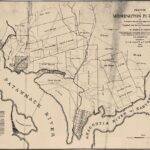Tornadoes are violent, rotating columns of air that extend from thunderstorms to the ground. Their destructive power can level buildings and toss cars, leaving a path of devastation in their wake. But why do these terrifying phenomena occur? This article delves into the science behind tornado formation, exploring the atmospheric conditions that give rise to these powerful storms.
Within a massive thundercloud, warm, moist air ascends while cool air descends, often accompanied by rain or hail. This dynamic interplay creates rolling, spinning air currents within the cloud. Initially horizontal, these spinning columns can become vertical and descend from the cloud. Upon touching the ground, a tornado is born, posing a significant threat to anything in its path.
The Recipe for a Tornado: Understanding the Necessary Ingredients
Specific atmospheric conditions are conducive to tornado formation. While tornadoes can occur in any state, a region in the Midwest known as “Tornado Alley” experiences a high frequency of these storms. This is due to the unique confluence of warm, moist air from the Gulf of Mexico and cool, dry air from Canada.
A key ingredient for tornado formation is wind shear, a phenomenon where winds at different altitudes blow in different directions or at varying speeds. This creates instability in the atmosphere, leading to the development of large thunderstorms called supercells.
Inside a supercell, the rising warm air and falling cool air create a rotating updraft. This rotating updraft, known as a mesocyclone, is the precursor to a tornado. As the mesocyclone intensifies, it can stretch vertically, forming a funnel cloud. When this funnel cloud reaches the ground, it becomes a tornado.
The Enhanced Fujita Scale: Measuring Tornado Intensity
The strength of a tornado is measured using the Enhanced Fujita (EF) Scale. This scale categorizes tornadoes from EF0 (the weakest) to EF5 (the strongest) based on the damage they inflict. EF5 tornadoes, with winds exceeding 200 mph, are capable of causing incredible destruction.
| ENHANCED FUJITA SCALE |
|---|
| EF No. |
| 0 |
| 1 |
| 2 |
| 3 |
| 4 |
| 5 |
Predicting Tornadoes: A Challenging Task
While meteorologists can identify conditions favorable for tornado formation, predicting the exact time and location of a tornado remains a challenge. Advanced weather satellites, like the GOES-R series, provide valuable data by monitoring cloud movements and analyzing atmospheric conditions within clouds. This information helps forecasters issue timely warnings, potentially saving lives.
Conclusion: Understanding Tornadoes to Minimize Their Impact
Tornadoes are powerful and often unpredictable natural phenomena. Understanding the science behind their formation and utilizing advanced weather forecasting technologies are crucial for mitigating their devastating impact. While we cannot prevent tornadoes, increased awareness and preparedness can help communities better protect themselves from these destructive forces.

